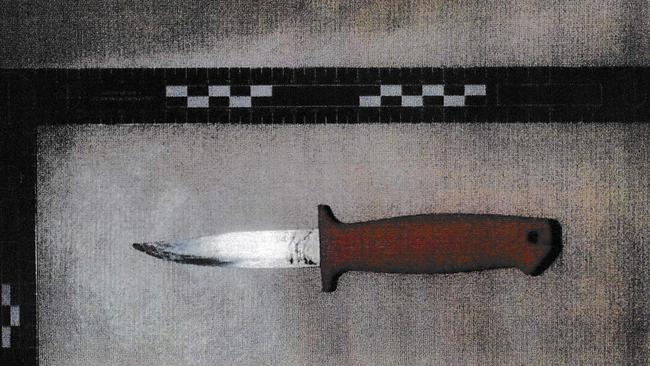The Night Driver podcast: Police ‘blunder’ destroyed possible clues in Janine Vaughan murder probe
Few things trouble Janine Vaughan’s family as much as the thought her murder might have been easily solved within days.

Few things trouble Janine Vaughan’s family as much as the thought her mysterious murder might have been easily solved within days, only for crucial evidence to be ignored and then inexplicably destroyed by the authorities working to crack the case.
When the 31-year-old store manager disappeared near Bathurst’s Metro Tavern after a late-night out with friends in early December 2001, she left behind precious few clues.
Janine was seen getting into a red car with an unknown driver shortly before 4am. She was never heard from again, the driver has never been identified and her body has never been found.
■ Subscribers of The Australian will be able to hear The Night Driver podcast before the rest of the nation, exclusively in The Australian app. Subscribe to The Australian here, and download the app via: Apple App Store | Google Play Store
Yet the trail did not go completely cold. Five days after she disappeared, police were called with a potential breakthrough.
A member of the public had spotted something suspicious on the ground little more than five minutes’ drive from where Janine was last seen: a sharp knife, with blood and hairs stuck to the blade.

The importance of the discovery was not lost on police, who had been searching for Janine’s body with cadaver dogs and a helicopter all week — the knife was immediately retrieved, bagged and logged, ready for testing.
By 4.50pm, the bloodstained blade had been handed to a forensic crime scene analyst, Senior Sergeant Noel Paine, who was tasked with determining whether it was related to the Vaughan case.
PDF: Statement about the knife
“There was apparent blood staining on both sides of the blade,” he noted at the time. “A group of apparent hairs adhered to the blade near the handle. The blade was single-edged with the point or a tip slightly bent. There was a chip or dent in the edge of the blade near the tip.”
Then, nothing. Despite the blood and hairs, the suggestion it been chipped by some form of trauma and an active investigation into a suspected abduction and murder of a young local woman, the knife did not undergo further forensic analysis.
There was no attempt to recover fingerprints nor DNA from the knife. Instead, it sat idle in storage for two months before, bafflingly, being destroyed by police.
Its destruction went undisclosed to the public for eight years before being canvased during a coronial inquiry into Janine’s disappearance in 2009.
Detective Sergeant Peter McLaughlin said staff responsible for disposing of miscellaneous property had destroyed it.

Gone forever, it is impossible to know whether the knife was the weapon Janine’s abductor used to kill her or completely unrelated. For some, Janine’s devoted sister Kylie Spelde among them, its destruction in police custody reinforces suspicions of a cover-up.
“I don’t understand why, you know, it wasn’t sent away immediately for analysis,” she tells The Night Driver, a new podcast by The Australian dedicated to exploring Janine’s murder. “Why is it still sitting in the station in February? Without being analysed.”
She cannot help questioning whether a police officer at the country station recognised the knife and arranged for it to be destroyed to protect himself or a colleague. “It’s even got a chip in it,” she says. “If a body is recovered at some point ... maybe they will have that indentation where the knife has gone in or chipped the bone.
“(It might be unconnected), but it also could be the key. It also could be like the whole investigation could have been solved.”
■ READ MORE: The Night Driver — the new podcast from the investigative journalist who brought you The Teacher’s Pet
Retired Family Court judge and former criminal defence lawyer Peter Murphy SC has also been studying the circumstances surrounding the knife’s destruction, as part of The Night Driver investigation, in the hope a careful re-examination of the case might help provide a breakthrough.
He agrees the blade might have been vitally important to solving the case, particularly given a disturbing declaration made by one of the three persons of interest called at the coronial inquest into Janine’s disappearance.
Denis Briggs told his partner and several friends at the time she went missing that he had picked up Janine in his car and tried to rape her before killing her.
“Let’s bear in mind in that respect that we’ve got what we’ll call a confession from Mr Briggs, nominating slicing Janine’s throat as being the means by which he murdered her,” Murphy says.
Briggs later recanted the confession, attributing it to delusions of grandeur while off his antipsychotic medication.
Murphy places little stock in conspiracy theories. “It’s a complete mystery as to how something like this happens,” he says. “Murders don’t happen in Bathurst every day or every week. Common sense would dictate you would take the greatest possible care with (the knife).
“As to what happened to it, no one seems to know, except it was destroyed. Were there any enquires made of any active investigations before it was destroyed? Was there any contact made with those investigating Janine’s disappearance before it was destroyed? It doesn’t seem so.
“Cock-up trumps conspiracy almost always. I can see inefficiencies, I can see slackness, I can see things not being investigated that should’ve been investigated at a much, much earlier stage.
“I can’t see evidence of conspiracy … it’s equally possible it may have nothing to do with Janine’s disappearance. We don’t know, will never know, can never know.”
If you know anything about the disappearance of Janine Vaughan, contact Hedley Thomas confidentially at thomash@theaustralian.com.au


